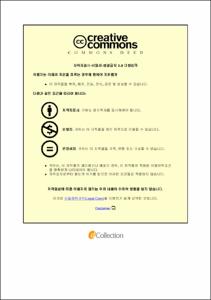Ulsan Univ. Repository
Thesis
General Graduate School
Mechanical & Automotive Engineering
2. Theses (Ph.D)
Development of AI-based monitoring and control system for the cyclic manufacturing process
- Abstract
- The success of the manufacturing process, which involves grinding as one of the stages, depends solely on the accuracy of the grinding process. The requirement of the desired surface finish at the last stage of the manufacturing makes it the most crucial stage and prone to quality defects, as this process is mainly done to provide the desired surface finish with very high precision. Complexity and importance make the real-time monitoring and control of the grinding process an essential topic for researchers. Quality defects ruin all previous manufacturing stages and incur a substantial economic loss due to product rejection. The presented thesis aims to develop and implement a monitoring system supplemented by an intelligent decision-making system for the detection and compensation of process failures. Conventionally, the quality of the products depends on the machine behavior and the operator’s skill, who changes the process parameters from his own experience and expertise.
Monitoring the grinding process has caught the attention of many researchers, but most of the systems are focused on grinding wheel and other machine component conditions. Machine vision, optical sensors, and AI-based process diagnostic tools generally focus on the detection of failure. Over time various models have been proposed to control grinding tasks. However, they are limited only to optimizing the partial aspects of the grinding process. Hence they are able to reach only level three of the diagnostic and control automation. In this thesis, a vibration sensor-based monitoring system and AI-based decision-making system for the grinding process control are introduced. The in-process signals coming from the installed sensors are used for data collection, failure detection, and making intelligent decisions in autonomous way. Four significant essential process parameters were investigated: grinding wheel RPM, workpiece RPM, wheel entry speed, and coolant flow rate. AI model with supervised learning was used to understand their relationship with the real-time vibration signal coming from the sensors. The model after training and validation was used to make the decisions for the change in the process parameters. The control actions obtained from the AI system are delivered to the machine controller. Software, as well as hardware modules of the developed system, is explained in detail. The functionality of the developed system is also demonstrated through its application into the grinding process of the brake disc. The developed system is installed as an independent software at the industrial PC that can function without any additional CAE or programming tools. The system is a significant contribution towards industry 4. 0 and making the manufacturing facilities autonomous. It has improved the overall productivity of brake disc manufacturing by reducing the occurrence of the quality failure instances and decreasing the dependencies on the operators for the know-how of the process.
This thesis will introduce related literature, followed by the research methodologies involved in the presented piece of research. The influence of critical process parameters on the grinding process is explained. Development of the vibration sensor-based monitoring system follows it. Subsequent sections are developing an intelligent decision-making system, its training, deployment, and implementation at the factory. The final part presents the benefits of this system to the manufacturers.
- Issued Date
- 2022
- Awarded Date
- 2022-02
- Type
- dissertation
- Affiliation
- 울산대학교
- Department
- 일반대학원 기계자동차공학과
- Advisor
- 이장명
- Degree
- Doctor
- Publisher
- 울산대학교 일반대학원 기계자동차공학과
- Language
- eng
- Rights
- 울산대학교 논문은 저작권에 의해 보호 받습니다.
- Appears in Collections:
- Mechanical & Automotive Engineering > 2. Theses (Ph.D)
- 파일 목록
-
-
Download
 200000604471.pdf
기타 데이터 / 10.4 MB / Adobe PDF
200000604471.pdf
기타 데이터 / 10.4 MB / Adobe PDF
-
Items in Repository are protected by copyright, with all rights reserved, unless otherwise indicated.